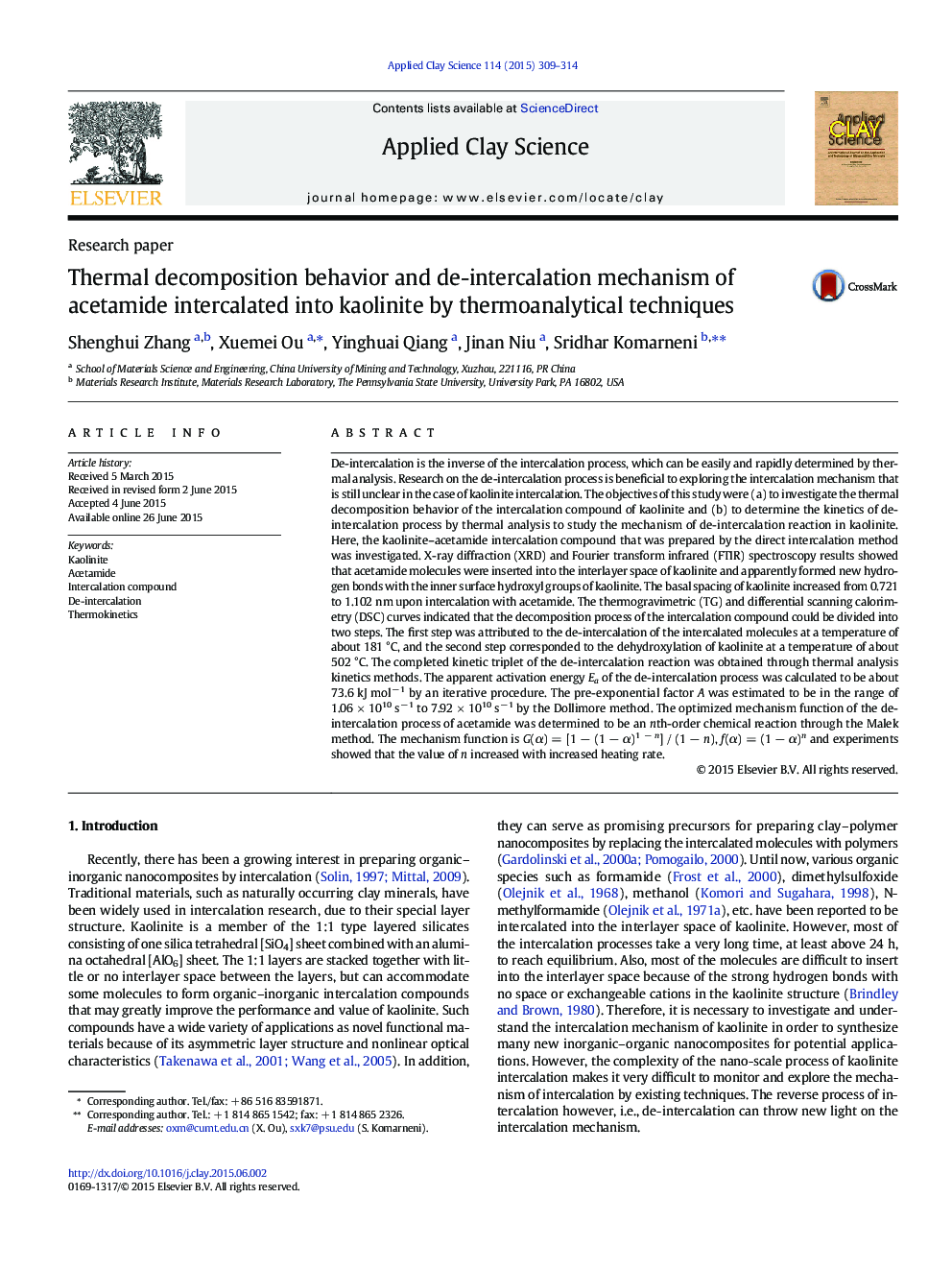| Article ID | Journal | Published Year | Pages | File Type |
|---|---|---|---|---|
| 1694382 | Applied Clay Science | 2015 | 6 Pages |
•The structure and thermal decomposition of kaolinite–acetamide complex was studied.•Effect of heating rates on de-intercalation mechanism of acetamide was investigated.•The intercalation mechanism can be inferred from kinetics of de-intercalation.•The apparent activation energy of the de-intercalation process was 73.6 kJ mol− 1.
De-intercalation is the inverse of the intercalation process, which can be easily and rapidly determined by thermal analysis. Research on the de-intercalation process is beneficial to exploring the intercalation mechanism that is still unclear in the case of kaolinite intercalation. The objectives of this study were (a) to investigate the thermal decomposition behavior of the intercalation compound of kaolinite and (b) to determine the kinetics of de-intercalation process by thermal analysis to study the mechanism of de-intercalation reaction in kaolinite. Here, the kaolinite–acetamide intercalation compound that was prepared by the direct intercalation method was investigated. X-ray diffraction (XRD) and Fourier transform infrared (FTIR) spectroscopy results showed that acetamide molecules were inserted into the interlayer space of kaolinite and apparently formed new hydrogen bonds with the inner surface hydroxyl groups of kaolinite. The basal spacing of kaolinite increased from 0.721 to 1.102 nm upon intercalation with acetamide. The thermogravimetric (TG) and differential scanning calorimetry (DSC) curves indicated that the decomposition process of the intercalation compound could be divided into two steps. The first step was attributed to the de-intercalation of the intercalated molecules at a temperature of about 181 °C, and the second step corresponded to the dehydroxylation of kaolinite at a temperature of about 502 °C. The completed kinetic triplet of the de-intercalation reaction was obtained through thermal analysis kinetics methods. The apparent activation energy Ea of the de-intercalation process was calculated to be about 73.6 kJ mol− 1 by an iterative procedure. The pre-exponential factor A was estimated to be in the range of 1.06 × 1010 s− 1 to 7.92 × 1010 s− 1 by the Dollimore method. The optimized mechanism function of the de-intercalation process of acetamide was determined to be an nth-order chemical reaction through the Malek method. The mechanism function is G(α) = [1 − (1 − α)1 − n] / (1 − n), f(α) = (1 − α)n and experiments showed that the value of n increased with increased heating rate.
Graphical abstractThermal analysis curves (TG-DSC) of kaolinite–acetamide intercalation compound at 10 °C min− 1 heating rateFigure optionsDownload full-size imageDownload as PowerPoint slide
